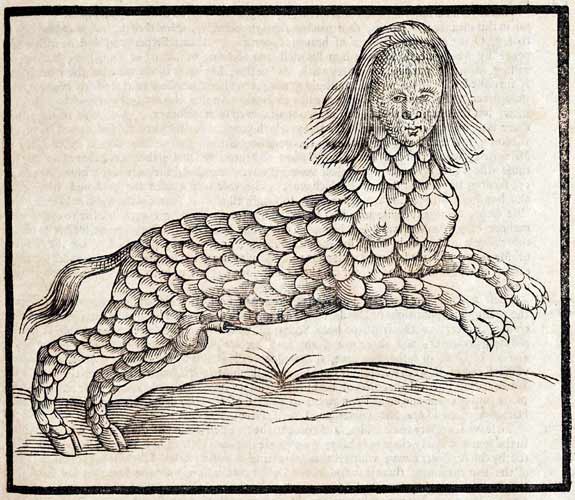In Search of the Lamia in Ethiopia? January 28, 2014
Author: Beach Combing | in : Modern , trackbackThis passage appears in an 1863 book about a Briton’s residence in Abyssinia. The author seems to be in two minds about the monster he is describing. Is it real or is it a figment of the locals’ imagination? In the text he seems to account for it as legend, but note that he had tried to see (and presumably to shoot) the ‘wobbo’. Stalking this particularly beastie would, in fact, be the equivalent of a Saudi turning up to catch Welsh fairies in a butterfly net.
There is an animal, which I know not where to class, as no European has hitherto succeeded in obtaining a specimen of it; it is supposed by the natives to be far more active, powerful, and dangerous than even the Hon, and consequently held by them in the greatest possible dread. They call it ‘wobbo’ or ‘mantillit,’ and some hold it in superstitious awe, looking upon it more in the light of an evil spirit with an animal’s form than as a wild beast. Their descriptions of this animal are vague in the extreme: some say that its skin is partly that of a lion, but intermixed with that of the leopard and hyaena; others, again, assert that its face is human, or very like it. It appears in the valleys, happily, only rarely; for they say that when it takes its abode near a village, it pays nightly visits, entering the very houses, and carrying off the children, and even occasionally grown-up persons. One had been killed some years ago on the river Werrey, and its skin presented to Oubi; but I could never discover what became of it. I heard of a village which had suffered considerably from its depredations, and for several days watched every night in the neighbourhood, but without success.
Several contemporaries wondered whether our author was not describing a Lamia. The Lamia is an animal that first appears in Greek myth. The Lamia usually has a human face and preys on humans and particularly on children. The animal part varies greatly ranging from a serpent (Keats) to a four-legged beast of varying description. Enjoy the image above. Sometimes the human face tempts the victim in some way: was that an aspect of the myth that our author ignored in his effort to make sense of the curious account in biological terms? Perhaps. Beach has failed to turn up more Ethiopian background though there was apparently a Valley of the Wobbo. Presumably very bad things happened there. Other thoughts: drbeachcombing AT yahoo DOT com
13 March 2014: Typhon writes: I would like to add something to your article “In search of the Lamia in Ethiopia” from 28.01.14: On one hand I would rather liken the beast to the Manticore (http://en.wikipedia.org/wiki/Manticore) because the human face/voice to lure people to their death and the general description I guess it would be more fitting, from a cryptozoological standpoint (ignoring the spiked tail and the wings..), then the Lamia.. which is as you say variously portrayed but not standardized as a cat like something like the Manticore. Now, the more interesting part for you, here is the quote from “Eberhardts Mysterious Creatures” (the number 1 collection of cryptobeasts) (p.592): Wobo Mystery tigerlike CAT of East Africa. Etymology: Amharic (Semitic) word. Variant names: Abu sotan (in Sudan), Beast of Bungoma (in Kenya), Mendelit (Tigrinya/ Semitic). Physical description: Larger than a lion. Yellow-brown or gray-brown color. Black blotches or stripes. Habitat: Rocky mountains. Distribution: Ethiopia and Sudan; possibly western Kenya. Significant sightings: Theodor von Heuglin was told in 1862 that a skin of this cat had hung for many years in the cathedral of Eifag. A mystery cat with a tiger’s head, a leopard’s spots, and a lion’s claws went on a livestockkilling spree in Kenya in 1974. Sources: Theodor von Heuglin, Reise nach Abessinien, den Gala-Ländern, Ost-Sudan und Chartum in den Jahren 1861 und 1862 (Jena, Germany: H. Costenoble, 1868); Theodor von Heuglin, Reise in Nordost-Afrika (Braunschweig, Germany: G. Westermann, 1877), vol. 2; C. A. W. Guggisberg, Simba, the Life of the Lion (Cape Town, South Africa: H. Timmins, 1961); Karl Shuker, Mystery Cats of the World (London: Robert Hale, 1989), pp. 141–142. Thanks Typhon!



